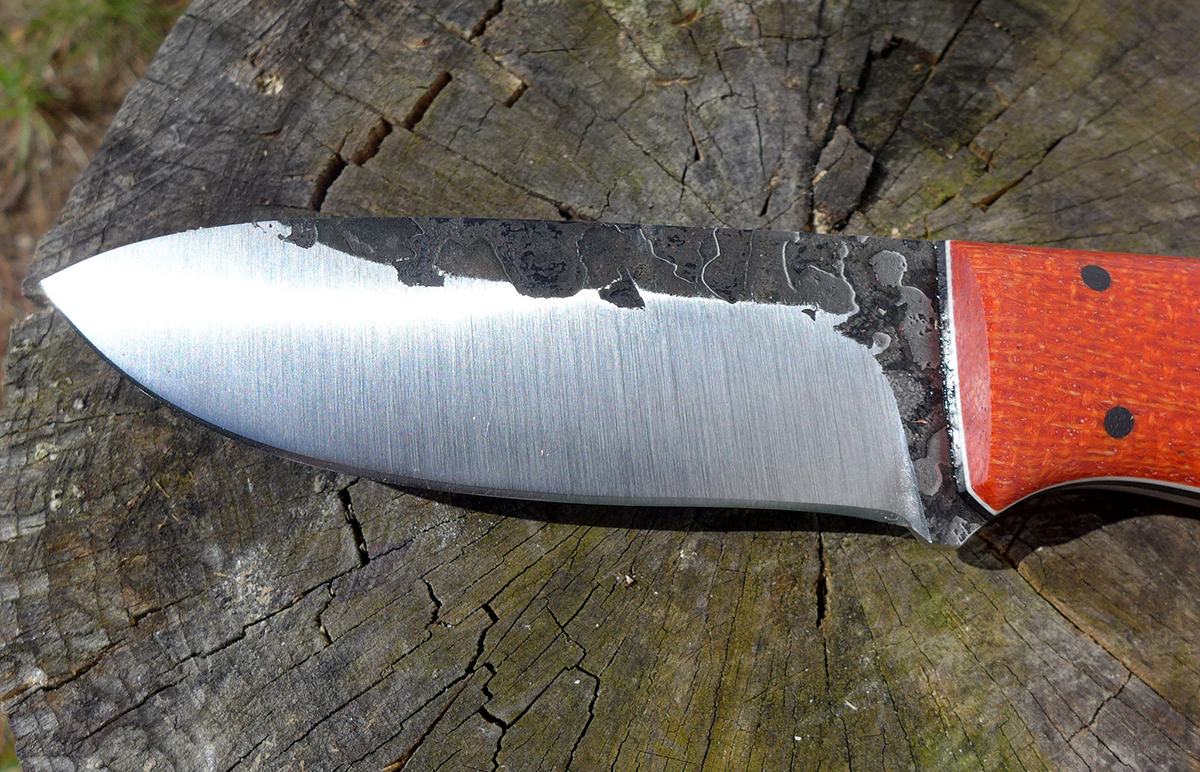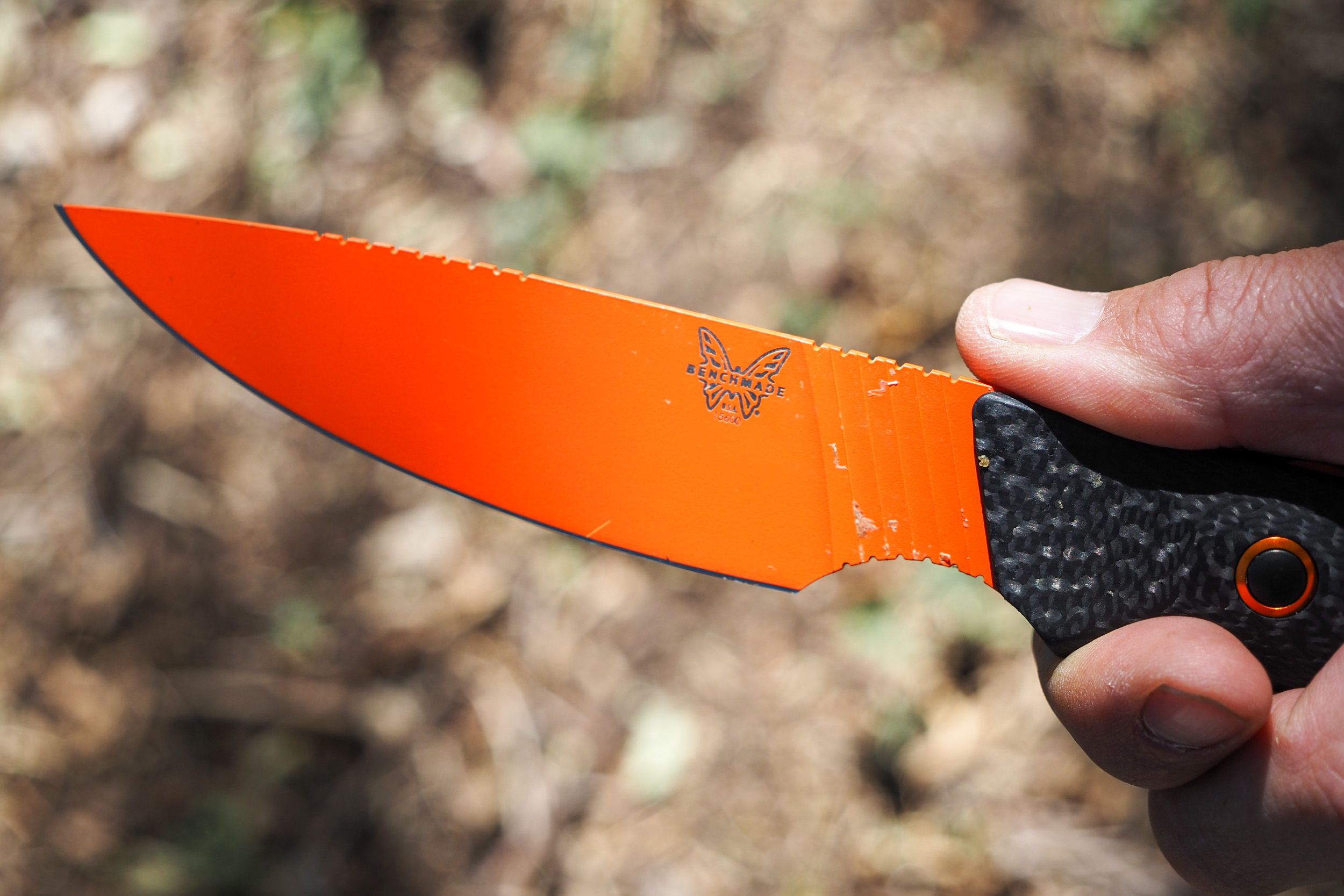Up your knife knowledge with heat treatment, blade geometry, and finish.

Knife “knuts” are always, to some degree, steel junkies. If you bother to read reviews about a knife you invariably want to know about the blade steel. It’s crucial to understanding how a knife performs.
But it is only the beginning. The three axes of blade performance — toughness, hardness, and corrosion resistance — are important and all tied directly to the steel’s chemistry. However, these factors are not the end-all, be-all of cutting performance.
If you like cars, think of these factors like the top speed of a car. They tell you a lot, but not everything. The fastest car in the world rarely holds the top time on the Nurburgring, because speed is just one aspect of performance. The same is true with a knife — steel chemistry is just one aspect of performance.
Here are some others.
Blade Geometry, Heat Treat, & Blade Finish
Assuming the same steel between two blades, the one with good geometry and a good heat treat will always be the better performer. In fact, in some cases, blade geometry and heat treat can actually trump steel chemistry.
Lots of bushcrafters insist that the steel doesn’t even matter so long as the geometry and heat treat are good. This leads to things that make steel junkies scratch their heads — like $375 blades made of O1, a steel old enough to belong to your grandpa. Obviously you’d want all three: good steel, good geometry, and good heat treat. But you can do a lot with lesser steel that is shaped and heat treated correctly.
Blade finish refers to the final polishing of a blade, and it can make a lot of difference. Read on for more depth on these three attributes.
Blade Geometry
Blade geometry is a few things — grind, blade shape, and finish. If makers optimize each of these, they can squeeze superior performance out of a lesser steel. The best example of this is the Al Mar Ultralight series of knives.

These knives have great grinds, shapes, and finishes. It makes the humble AUS8 steel perform closer to a high-end powder steel than its humble chemistry should.
Blade Grind Groups
Blade grinds come in three big groups: convex, flat, and hollow. Here is a good Wikipedia page on grinds.
- A convex grind, seen point first, appears to bow out from the spine like the hull of a row bow, but with a much thinner profile.
- A flat grind is just as it sounds, a straight line from the spine to the edge.
- A hollow grind is the opposite of a convex grind, the steel is dished out as it goes from the spine to the edge.
To me, convex edges are best for hard use tasks and splitting chores (this is why all good axe heads have a convex grind). I like hollow grinds on folders and other knives that have a slim profile and don’t do hard tasks. I am generally not a fan of flat grinds for any use, but a good flat grid on very thin stock can make for an excellent slicer, too.
Blade Shape
In addition to grinds, the shape of the blade impacts performance too. For general use, it is hard to beat Spyderco’s leaf-shaped blade, a drop point blade or a clip point blade.
I also like a reverse tanto grind as well. For piercing tasks, a good sharp wharncliffe works well, as does a spear point blade.
Here is a good Wikipedia article on each of the blade shapes with pictures.
Heat Treat
The magic ingredient of knife performance is heat treat. Heat treat is the process by which the steel is converted from its unannealed state to a harder annealed state. There is a lot of metallurgy that goes into heat treat, but the consumer is never privy to this unless the manufacturer or maker tells you.
Unlike grind or chemistry, which is labeled, you can’t figure out the heat treat protocol on a steel. For high-end steels, the heat treat protocols are determined by the manufacturer and are very precise and specific. For older steels, people have experimented and developed new and tweaked protocols coaxing new attributes out of an old chemistry.
Of the “brand” heat treats, only a few made a difference in my experience. Paul Bos, the heat treat master at Buck, produces blades that routinely outperform their chemistry. His 420HC is much better than other 420HC steels. I have also found that the Rowen heat treat on ESEE knives is excellent.

Finally, in the custom world, TM Hunt’s O1 protocol has a reputation of producing superior blades. As does the protocol used by Fiddleback Forge (the first image in this article). Beyond that, we are largely in the dark.
Blade Finish
It is worth mentioning how a blade is finished also matters. The finer the polish on the blade, the more resistant it is to corrosion, allowing a less corrosion resistant steel chemistry to “play up” a grade or two.
This is one of the many secrets behind a Randall-made knife. By polishing the steel, many makers claim they are “closing” the grain of the steel, letting less moisture get into (or on) the blade surface. Something like bead blasting does the exact opposite.
Conclusion
Knives get a lot of their performance from their chemistry, but the physics of steel grinds and heat treat can oftentimes raise the chemistry to a level of performance beyond what you expect. The superbly finished AUS8 in Al Mar knives is wonderful and the 420HC Paul Bos treats is a steal.
Once you have found your preferred chemistry, take things to the next level and look for some really good blades with excellent blade geometry and heat treats. You’ll be stunned just how much you get out of a blade when everything is done correctly.










